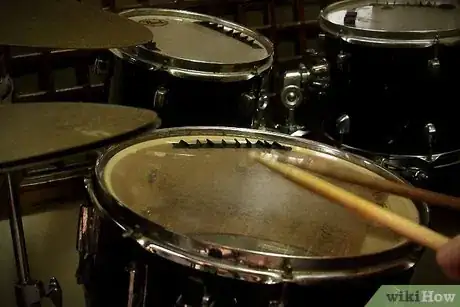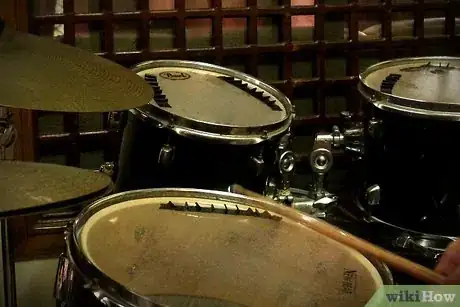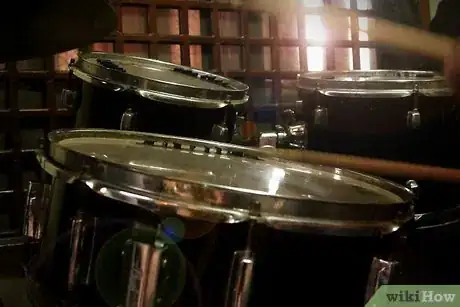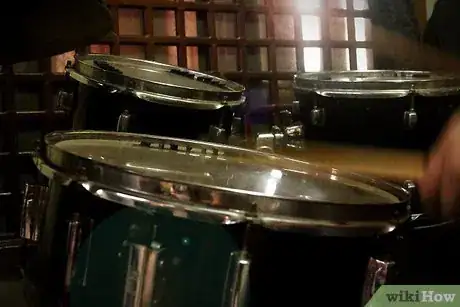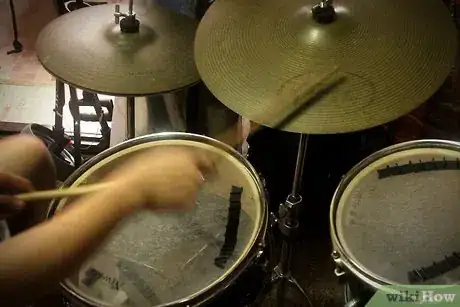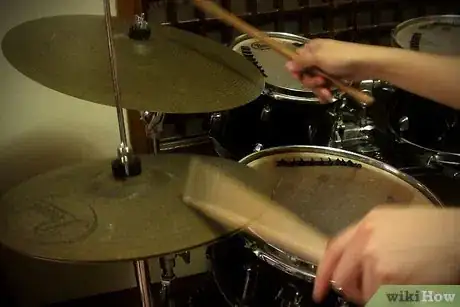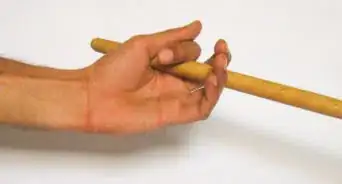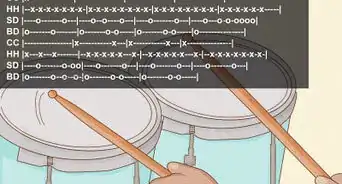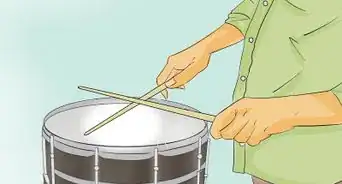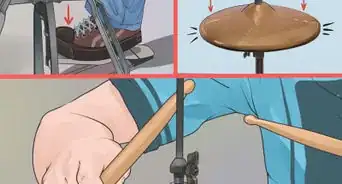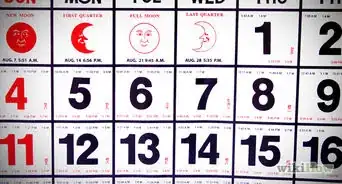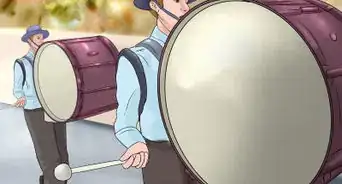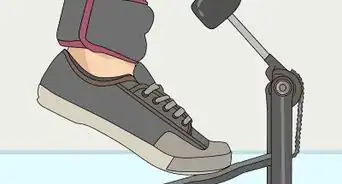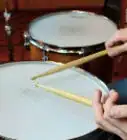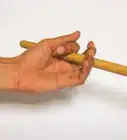wikiHow is a “wiki,” similar to Wikipedia, which means that many of our articles are co-written by multiple authors. To create this article, 9 people, some anonymous, worked to edit and improve it over time.
There are 7 references cited in this article, which can be found at the bottom of the page.
This article has been viewed 55,878 times.
Learn more...
A major element of rudimentary drumming is the double stroke roll. Basically what they are is two strokes on each hand, the second louder than the first, progressively made faster until you are making a roll (it will sound almost like a machine gun). Double stroke rolls can be broken down into shorter rolls, such as a seven stroke roll or nine stroke roll. This is just one suggested way of learning.
Steps
-
1Before you can start, make sure you are comfortable with holding drum sticks (check out "How to Hold Drum Sticks") and own a practice pad or drum.[1]
-
2Understanding the basics. Double Stroke Rolls, when done by more advanced drummers, will be two distinct strokes on each hand, steadily getting faster until a roll is produced. The better you are, the less bouncing is required to get that fast. As a beginner, there's almost no way you could just play a perfect double stroke roll.[2]Advertisement
-
3Traditional Method. Some teachers have students begin to learn the Double Stroke Roll by starting with double strokes (right right, left left; also called "pa-pa ma-ma"). In this method, you should start slow and get faster until your reach a breaking point (when you can no longer maintain speed or the correct sticking). You should practice your rolls slow and then fast, holding your speed just below your breaking point for a minute or so. Every time you practice, you should try to increase your speed and move past your breaking point.
-
4While that way is often seen as the more correct way of learning, it's also very slow and there is another way. The benefits of this way usually allow you to start playing an effective (though messier) roll. This can be helpful if you want to start working on other songs while you're practicing. You'll also be practicing and improving your rolls in a practical way, rather than focusing solely on rolls and not at all on music.
-
5Start by learning to make the stick bounce. What is meant by "bounce" is that you hit the drum only once but the stick should produce several sounds. Often one hand is much better at this than the other.[3]
- It is difficult to get the hang of this at first. It requires finding a balance between pressing the stick down to keep it bouncing and releasing pressure to keep from "crushing" the stick into the drum.
- In general, you want your stick to make between 2-5 hits and keep it about an inch off the drum. Closer than that, and it sounds too "crushed", kind of dead sounding. Much higher, and that means that you're probably not in a lot of control of what you're sticks are doing.
-
6Once each hand gets good at this, start alternating your "bounces".
-
7Control your bounces. After a while, you'll be more comfortable with your bounces and it will start to feel more natural. At this point you want to learn how to stop the bounce after two hits (remember a double stroke roll should have only two hits per hand).[4]
- Tip: don't try to "snatch" your stick away to end the bounce quickly, simply add some pressure to stop the stick from moving.
- When you practice this, make sure you're not manually making two hits, that would be defeating the purpose.
-
8Speed up your double bounces. Again, spend a lot of time getting used to this and getting your double bounces fast (really fast- to the point where there isn't a pause between each sound). At this point you could start learning different Double Stroke Rolls and should be able to effectively play them in songs. Remember, however, that until you learn to clean them up, they may not sound as crisp or as clean as you may want them.[5]
-
9Clean up your rolls. At this point, your wrists and hands will have loosened up and your muscles will have gained both muscle memory and endurance. This is when you can try the more "standard" way of learning double strokes.[6]
- Start by making two hits on each hand, starting slow and getting faster. Because you've been working on bouncing and developing your skills, you should be able to go much faster than you originally would have been able to. Despite your practice, you'll still hit a breaking point, however you can push through that breaking point by using bouncing.
- Every time you practice, try to make your strokes go faster (get faster before resorting to bounces).
-
10Keep your rolls open, meaning let the bounces be higher off the drum head (1-3 inches). It'll produce a cleaner sound.
-
11Double Stroke Rolls can be broken into smaller rolls: fours, fives, sixes, sevens, nines, tens, elevens, fifteens, seventeens being some of the more common ones.[7]
- There is a basic formula for knowing how many hand exchanges are needed for each roll.
- Odd numbers: add 1, divide by 2 = hand exchanges. The last hand will make the end stroke.
- Even numbers: divide by 2, add 1 = hand exchanges. The last two hands will make a stroke. (This end stroke is very quick).
- All Double Strokes should end with an accented, definite stroke. If there are two or more rolls in a row, this is very important to make them distinct from each other.
- You should raise your hands slightly before entering a roll- it will keep it from bleeding into the last thing you just played and will also force you to play into it more, making it crisper and cleaner.
- Most double strokes should be alternated (one starting on the right hand, the next on the left hand). Even rolls are hard to alternate when played in a row, but you should be competent with them on both hands. Traditionally, however, sevens and sometimes fifteens are played only on the left hand (Ancient Fife and Drum, Civil War/Rev War/etc).
- There is a basic formula for knowing how many hand exchanges are needed for each roll.
Things You'll Need
- Drum sticks, drum pad/drum
References
- ↑ https://takelessons.com/blog/how-to-hold-drum-sticks-z07
- ↑ https://www.youtube.com/watch?v=W_979HkE4EI
- ↑ https://www.youtube.com/watch?v=TFjFaRViVBI
- ↑ https://www.youtube.com/watch?v=FZtcz__OmFA
- ↑ https://www.youtube.com/watch?v=r89XcU9NZtA
- ↑ https://www.youtube.com/watch?v=rJD-L-tyvyE
- ↑ https://www.youtube.com/watch?v=Qn7EQBXrKwI


